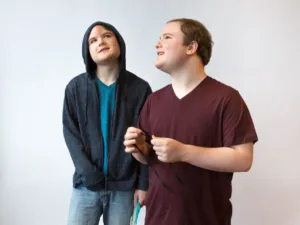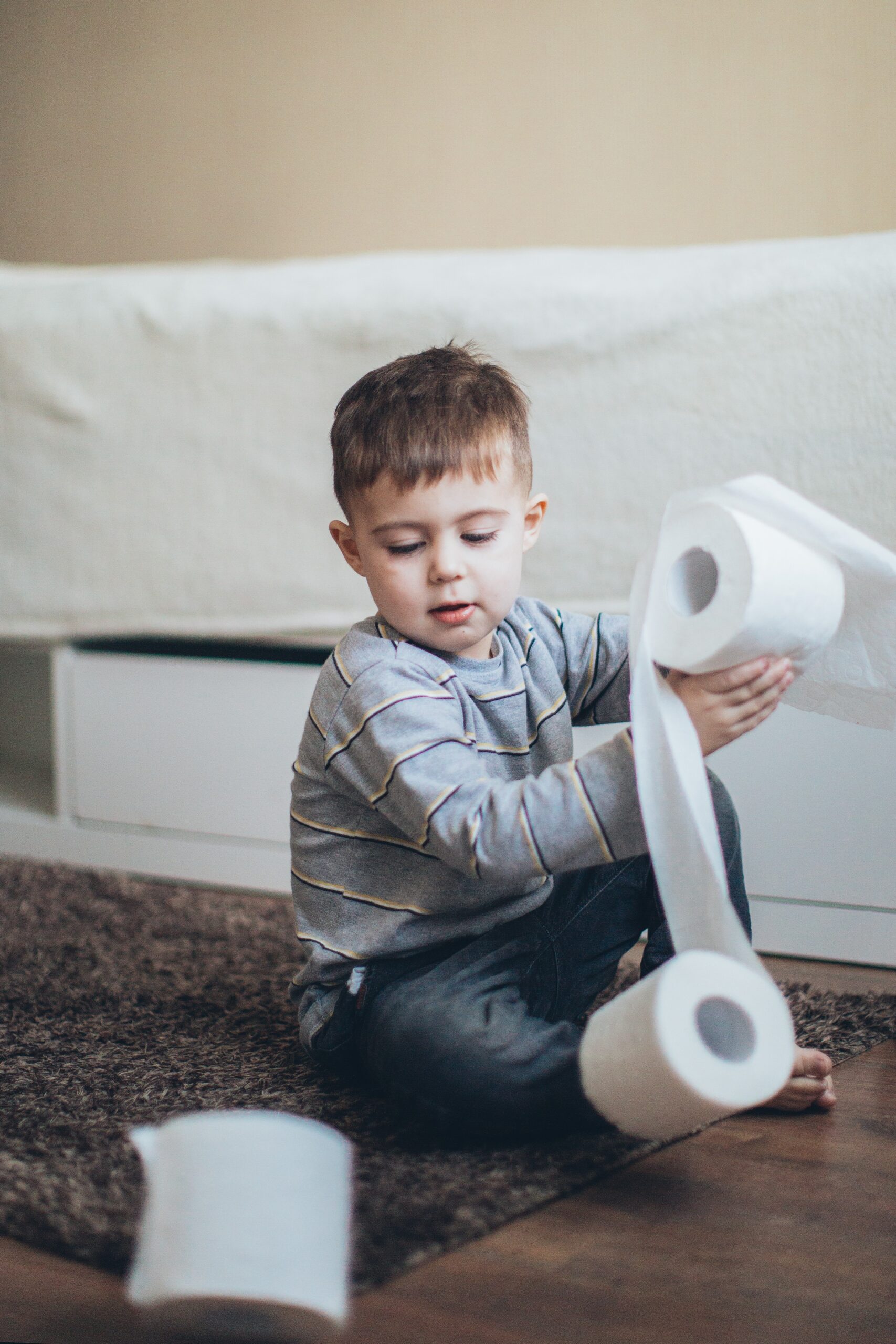Have you noticed your autistic twins doing repetitive behaviors, and you’re not sure why? You may see them flapping their hands or jumping up and down. Don’t worry, it’s a perfectly normal thing for autistics to stim and they are actually trying to regulate themselves due to emotions or sensory experiences! These behaviors can vary widely from person to person and may change over time.
What is stimming?
According to the National Autistic Society, stimming (self-stimulating behavior) might include “arm or hand-flapping, finger-flicking, rocking, jumping, spinning or twirling, head-banging and complex body movements.” It might also include the repetitive use of an object, such as flicking a rubber band or twirling a piece of string, or repetitive activities involving the senses (such as repeatedly feeling a particular texture). It can also be a vocal stim, such as making a repetitive sound, repeating a phrase or screeching.
Stimming can be a way for autistic individuals to cope with sensory overload, anxiety, or excitement. It can also help them communicate their needs or emotions. In general, the more that you understand about anxiety and sensory processing, the more that you can help your autistic twins and understand their behavior.
For example, my triplet son used to jump up and down when he was excited, and would make a sing song type noise. It took a long time for us to understand that when he did that, he was just really happy! He is nearly 17 now and still does it. He is just using his body and his voice to express his emotions differently than others would. You may have heard of the term “happy flappy” – autistic people may stim by expressing this physical joy by hand flapping, clapping or making repetitive movements with their hands or fingers.
What does stimming feel like?
Historically, stimming was seen as a negative behavior and parents tried to stop their autistic children from doing it. Stimming is a main reason why many parents turn to ABA therapy to try to train their children not to engage in this behavior in particular. But it’s crucial to remember that stimming is a natural part of the autistic experience and should not be seen as negative.
As we learn more about autism and listen to autistic adults, we can understand it a little better. Sometimes a stim is done just because it feels good – you have probably experienced something similar when you’ve belted out a favorite song in the shower or when you are driving alone!
For example, dad Michael has twin boys, and just one of them is autistic. One of his son’s stims is “walking up and down stairs, something it seems he could do without end. In our building, going up and down stairs has the added advantage of feeding C’s hunger for numbers and systems. He happily announces each floor he reaches: “Third floor!” “Fifth Floor!” He rejoices at seeing the electrical junction boxes covered with indecipherable acronyms: “CUXW!” “CUXX!”
On the other hand, sometimes stims happen because an autistic person gets stuck in what can be described as a “loop” and they can’t seem to move past it. Some autistics have described this as feeling like an obsession where they can’t stop themselves and to do so would cause dysregulation or a meltdown. By learning more about your autistic twins stimming behavior, you can decide how to best help them manage it.
Can stimming be dangerous?
Some stimming behavior can be dangerous, cause injuries or have harmful outcomes. For example, some autistic people stim by head banging, slapping, pulling hair, nail biting or skin picking. When extreme, these can cause injury or harm to the autistic individual or others. If you are worried about the stim, you can try to redirect it into something more positive. One way to do this is to observe the behavior and see if there are any triggers that are causing it to happen.
For example, twin mom Doreen had twins that would frequently bang their heads on the floor. It was recommended that she look for other ways to get proprioceptive input. She offered opportunities for them to jump and bounce instead, and the headbanging stopped within a few weeks. To help her twins stop rubbing their heads on the floor, she would “…tie a long turban around their head and let the ends hang down their backs to add weight. It took care of the head rubbing. They liked the feeling of the pressure and weight. After awhile they would come asking me for it when they needed it…”
Are twin stims the same?
Autistic triplets may exhibit similar or different stimming behaviors. Sometimes, they may engage in stimming together, while other times, they may stim independently. You might also notice that one autistic triplet’s stim might influence or set off the others. Like anything with twins, they might either be the same, or not! One twin mom shared that her twins both “…had flappy hands and bouncing on their butts before they could jump! First noticed at 8 months old. Identical twins with identical stims!”

Mom Jenny talked about the different stims that her identical twin boys had – one prefers a shoelace and the other prefers a piece of cloth or plastic. Jesse “likes to rub it (the shoelace) and he likes to clap it…sometimes when he’s clapping it, he’s happy and he laughs…and sometimes he’s stressed out so he uses it to calm himself.”
Nathaniel, prefers the cloth and Jenny thinks he uses it when he is stressed. “..He does it plenty of times when he’s just wandering around the house. He just likes doing it.”
How to support stimming
So how can you help to create an environment where your autistic twins or triplets can stim safely? Understanding each child’s sensory, anxiety and emotional needs and triggers will help greatly. One twin may want a quiet, organized space, while the other is literally bouncing off the walls. Give them both the time and space they need to meet those needs. Experiment with different sensory or fidget toys to see what helps each child.
Do your autistic twins stim? What does it look like in your family? Leave your thoughts in the comments below. Be sure to subscribe for the latest news and updates!
This website uses affiliate links. We may make a small commission from purchases when you use these links, at no additional cost to you. As an Amazon Associate we earn from qualifying purchases.




